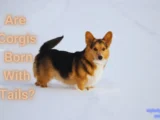
How To Fix Protective Aggression In Dogs?
Aggressive behavior in dogs is a familiar sight for many pet owners, manifesting through actions such as bared teeth, ears pulled back, a stiffened body, and a lunging posture with focused eyes. How to fix protective aggression in dogs? However, it’s crucial to recognize that aggression is not an indication of an evil dog or owner. Instead, it stems from the dog’s innate instinct to protect its family in the face of perceived threats.
Protective Aggression Defined
Protective aggression is a natural response displayed by dogs when they sense potential threats to their family members. This behavior mirrors the protective nature observed in the distant evolutionary cousins of dogs—wolves. In small social groups resembling packs, dogs, much like wolves, exhibit a collective instinct to rush to the aid of a threatened pack member.
This protective behavior is deeply ingrained in a dog’s genetic makeup, extending even to domesticated dogs. Owners often witness their dogs displaying protective aggression towards family members, considering them as part of their pack.
Maternal Protective Aggression
Mother dogs, in particular, showcase heightened protective aggression, especially when caring for their puppies. It’s common for a mother dog to exhibit aggression towards other people or dogs in the house after giving birth. Understanding and respecting these signals, such as snarling and baring teeth, are essential during this period.
As puppies grow and become more independent, parental aggression typically diminishes. The parents’ role in guiding and disciplining their offspring contributes to the development of the puppies, and the aggressive behavior gradually fades away.
Family Protection Dynamics
Protective aggression extends beyond the canine family to include human members. Dogs perceive their owners as part of their family and may exhibit aggressive behavior if they sense a potential threat. This could range from baring teeth and growling to more drastic measures if they perceive a serious danger.
Within the family unit, dogs may misinterpret situations, especially during playful interactions among children. Vigilance is necessary to prevent any potential misunderstandings that could lead to dog aggression.
also read
| Why Does My Dog Walk Around Me In Circles? |
How to Fix Protective Aggression in Dogs
Understanding that protective aggression is a response to fear and anxiety caused by perceived threats is crucial. Rather than condoning or punishing the behavior, it’s recommended to remain calm and address the situation. Increasing the distance from the perceived threat and exposing the dog to various environments can help reduce protective aggression over time.
While it may be challenging, refraining from punishing the dog allows for a more rewarding approach. Protective aggression, when appropriately understood, can serve as a valuable trait, ensuring the safety of both the dog and its owners in certain situations.
Final Words
In conclusion, acknowledging and working with a dog’s protective instincts is key to fostering a harmonious relationship. By providing a supportive environment and proper guidance, owners can help their dogs distinguish real threats from non-threatening situations, ultimately mitigating protective aggression in the long run.


